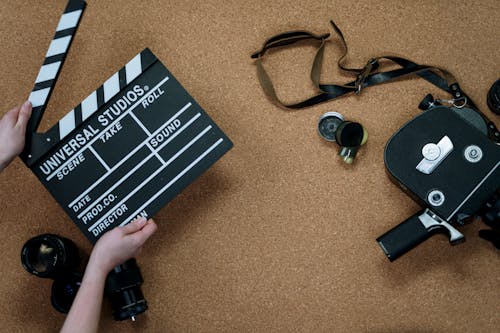In the vast universe of filmmaking, cinematography emerges as the eloquent language that speaks directly to the soul. It's a medium where every frame becomes a stanza, every shot a verse, weaving together a narrative that transcends mere words. Cinematography is the art of capturing moments and emotions, sculpting them into a symphony of light, shadow, and movement that resonates with audiences on a profound level.
At its heart, cinematography is about storytelling through visuals. It's the delicate dance of light and shadow, color and composition, that breathes life into the images flickering on the screen. Each frame is a canvas waiting to be painted with emotion and meaning, each shot a brushstroke in the grand tapestry of cinematic artistry.
Light, the fundamental building block of cinematography, serves as both protagonist and antagonist in the visual narrative. It shapes the mood and atmosphere of a scene, casting shadows that hint at hidden depths and illuminating moments of clarity and revelation. From the soft glow of candlelight to the harsh glare of a neon sign, light guides the viewer through the emotional landscape of the story.
Color, too, plays a pivotal role in the cinematographer's palette. It's the subtle nuances of hue and saturation that infuse each frame with emotion and meaning, whether it's the warm tones of a nostalgic memory or the cold blues of a distant future. Color sets the tone and reinforces the thematic undertones of a film, painting a vivid portrait of the world within the frame.
Composition is the framework upon which the visual story is built. It's the careful arrangement of elements within the frame, the balance of space and form, that draws the viewer deeper into the world of the film. From the sweeping vistas of epic landscapes to the intimate close-ups that reveal the innermost thoughts of a character, composition shapes our perception of the story and guides our emotional journey.
And then there's movement—the dynamic rhythm that gives the images on screen a sense of life and energy. Whether it's the graceful sweep of a camera crane or the frenetic chaos of a handheld chase, movement adds another layer of depth and dimension to the cinematic experience. It's the heartbeat of the film, pulsing with the emotions and passions of the characters on screen.
In the hands of a master cinematographer, these elements coalesce into a symphony of visual poetry—a language that transcends barriers of culture and language, speaking directly to the heart of the viewer. From the smallest indie film to the grandest Hollywood blockbuster, cinematography is the thread that binds us together, reminding us of the power of storytelling and the beauty of the human experience.
